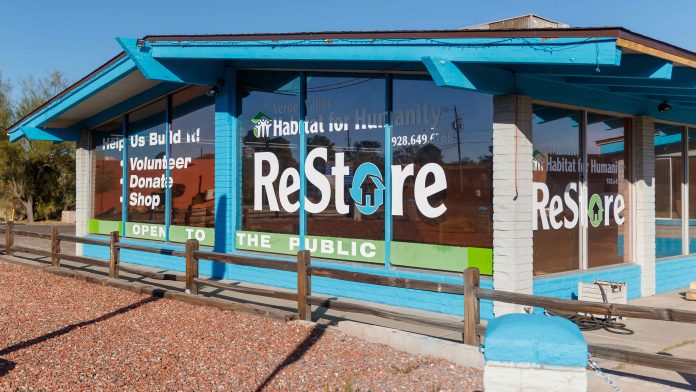In 2013, a woman named Nikki moved into a two-bedroom apartment in Camp Verde. As a single mom with three children, then ages 6, 7 and 9, Nikki knew the rental would not be enough for the needs of her family going forward, and hoped to be out of it in six months. Six years later, she still lives there, with her son left sleeping on the couch and her two daughters sharing a bedroom.
Nikki is an example of the kind of needy individual in the community that Verde Valley Habitat for Humanity chooses to help. She meets more than one of the four potential qualifications for need that Habitat uses to evaluate its future homeowners — currentlyliving in a rental, having overcrowded living conditions, having substandard living conditions, and not qualifying for a market rate loan — and also qualifies for their program in having a verifiable income, not having too much debt, and being legally eligible for a mortgage.
Habitat hopes to move Nikki and her family into a home in Rimrock that will be built in the coming year, but first is seeking additional fundraising in order to be able to pay for it. On Oct. 23, Habitat sent out a fundraising email to its volunteers, telling them that in addition to their normal push for funding, the organization would be getting additional funding from a Sedona resident named Gordon [he chose not to have his full name included], a donor who got involved with Nikki’s case due to his desire to help single mothers in the area.
“I believe that a home is the basic right of all children,” Gordon was quoted as saying in the email to volunteers. “Their success is absolutely dependent on a safe place to live. If I can give them a head start to a good life by helping them get into a home I absolutely must do it. It is imperative.”
The matching donation fundraiser is the first one of its kind Habitat has done and is part of the organization’s attempt to expand its operations. In the 24 years since the organization has been in the Verde Valley, Habitat has built 14 homes. But according to Executive Director Tania Simms, the plan for the charity is to ramp up to four homes a year in the coming years.
“We have to continue to expand what we’re doing because the need is so great,” Simms said. “We have so many folks who live in our community who are just struggling. If we want to keep them here we have to provide housing.”
According to Simms, the first part of that expansion is to share stories like Nikki’s, in order to build up the support among the community to help people in the way that she and the Habitat leadership envisions.
“If we don’t share the need for housing, then we’re not going to get the support we need to be able to provide the housing,” Simms said. “Stable housing is what builds a community.”
Stability is a big part of the Habitat for Humanity process. Participants are encouraged to not only become homeowners, but to stay in their homes for the length of a 30-year mortgage. The ownership process involves new homeowners entering into a normal mortgage for the majority of their new house, with Habitat holding the rest of the balance in a separate mortgage, which it then slowly forgives over time as long as homeowners are paying back the main mortgage. This allows Habitat homes to be priced comparably to other homes in the area, keeping home prices stable, prevents participants from being able to cut and run, and fosters a stability in the community for the new homeowner.
In addition to promoting housing stability by keeping new homeowners in their homes, VVHFH has recently started a new program aimed at helping those already in homes to be able to keep them in good shape and stay in them. The Critical Home Repair Program, started in Dec. 2016, is another part of the organization’s work to expand, offering low-income, disabled, veteran and senior homeowners with needed repairs and maintenance, or adding disability accommodations. In the nearly three years since the new program has started, VVHFH has completed 26 home repairs, though Simms said that the organization hopes to accelerate that to two per month in the near future.
“We’re trying to grow it because we know the need is so great,” Simms said.



